|
Help
|
|
Browse
|
Search
|
Create the page "Hawthorn tree" on this wiki!
- truetrue English A heavy infestation of mistletoe (viscous album) on a hawthorn tree (crataegus spp) in Salisbury, UK. object has role: photographer author...(3,000 × 4,000 (4.62 MB)) - 18:26, 9 October 2021
- Creative Commons Attribution-Share Alike 2.0 Generic license. Attribution: Hawthorn Tree by Bob Harvey You are free: to share – to copy, distribute and transmit...(4,032 × 3,024 (7.16 MB)) - 19:11, 12 July 2024
- Creative Commons Attribution-Share Alike 2.0 Generic license. Attribution: Hawthorn tree by Jonathan Wilkins You are free: to share – to copy, distribute and...(800 × 600 (130 KB)) - 23:44, 12 January 2024
- BY-SA 4.0 Creative Commons Attribution-Share Alike 4.0 truetrue English Hawthorn tree marking the spot author name string: A.-K. D. Wikimedia username: A...(2,016 × 4,032 (3.42 MB)) - 14:52, 12 July 2024
- Creative Commons Attribution-Share Alike 2.0 Generic license. Attribution: Hawthorn Tree by Stephen Burton You are free: to share – to copy, distribute and transmit...(2,736 × 3,648 (4.25 MB)) - 06:29, 17 May 2022
- Creative Commons Attribution-Share Alike 2.0 Generic license. Attribution: Hawthorn Tree by Stephen Burton You are free: to share – to copy, distribute and transmit...(3,648 × 2,736 (2.04 MB)) - 19:43, 3 January 2022
- Commons Attribution-Share Alike 2.0 Generic license. Attribution: Veteran hawthorn tree, near the Middle Road by Stefan Czapski You are free: to share – to...(753 × 1,024 (390 KB)) - 16:26, 23 February 2023
- Creative Commons Attribution-Share Alike 2.0 Generic license. Attribution: Hawthorn Tree, Tamnagh by Kenneth Allen You are free: to share – to copy, distribute...(640 × 480 (181 KB)) - 21:10, 10 August 2023
- Commons Attribution-Share Alike 2.0 Generic license. Attribution: Pennine hawthorn tree by Neil Theasby You are free: to share – to copy, distribute and transmit...(5,050 × 3,788 (4.85 MB)) - 12:16, 18 August 2022
- Commons Attribution-Share Alike 2.0 Generic license. Attribution: Snowy Hawthorn Tree by Oast House Archive You are free: to share – to copy, distribute and...(640 × 480 (144 KB)) - 08:00, 18 June 2021
- Commons Attribution-Share Alike 2.0 Generic license. Attribution: Hardy hawthorn tree by Pauline E You are free: to share – to copy, distribute and transmit...(1,600 × 1,067 (580 KB)) - 00:39, 17 December 2022
- Creative Commons Attribution-Share Alike 2.0 Generic license. Attribution: Hawthorn Tree and Track by wfmillar You are free: to share – to copy, distribute and...(3,748 × 2,811 (4.84 MB)) - 10:15, 28 May 2022
- Commons Attribution-Share Alike 2.0 Generic license. Attribution: Bare hawthorn tree by Philip Halling You are free: to share – to copy, distribute and transmit...(531 × 800 (164 KB)) - 02:05, 31 October 2023
- Creative Commons Attribution-Share Alike 4.0 truetrue English Blossoming hawthorn (Crataegus aronia) Hebrew עוזרר בהרי יהודה URL: https://commons.wikimedia...(5,472 × 3,648 (5.41 MB)) - 12:10, 27 January 2024
- Commons Attribution-Share Alike 2.0 Generic license. Attribution: Old hawthorn tree by Graham Cole You are free: to share – to copy, distribute and transmit...(640 × 480 (172 KB)) - 19:11, 15 April 2022
- Commons Attribution-Share Alike 2.0 Generic license. Attribution: Scraggy hawthorn tree by Penny Mayes You are free: to share – to copy, distribute and transmit...(640 × 480 (65 KB)) - 12:10, 6 January 2022
- Creative Commons Attribution-Share Alike 2.0 Generic license. Attribution: Hawthorn tree at Skirwith by Karl and Ali You are free: to share – to copy, distribute...(800 × 600 (135 KB)) - 12:25, 22 December 2022
- Creative Commons Attribution-Share Alike 2.0 Generic license. Attribution: Hawthorn tree, Wandale by Karl and Ali You are free: to share – to copy, distribute...(800 × 600 (145 KB)) - 14:54, 27 May 2022
- Creative Commons Attribution-Share Alike 2.0 Generic license. Attribution: Hawthorn tree in Borrowdale by Tim Hodgins You are free: to share – to copy, distribute...(1,456 × 2,592 (1.88 MB)) - 07:06, 17 July 2022
- Commons Attribution-Share Alike 2.0 Generic license. Attribution: A small hawthorn tree by Walter Baxter You are free: to share – to copy, distribute and transmit...(640 × 427 (162 KB)) - 15:33, 30 June 2023
[printfriendly]
Crataegus (/krəˈtiːɡəs/[2]), commonly called hawthorn, quickthorn,[3] thornapple,[4] May-tree,[5] whitethorn,[5] Mayflower or hawberry, is a genus of several hundred species of shrubs and trees in the family Rosaceae,[6] native to temperate regions of the Northern Hemisphere in Europe, Asia, North Africa and North America. The name "hawthorn" was originally applied to the species native to northern Europe, especially the common hawthorn C. monogyna, and the unmodified name is often so used in Britain and Ireland. The name is now also applied to the entire genus and to the related Asian genus Rhaphiolepis.
Etymology
The generic epithet, Crataegus, is derived from the Greek kratos "strength" because of the great strength of the wood and akis "sharp", referring to the thorns of some species.[7] The name haw, originally an Old English term for hedge (from the Anglo-Saxon term haguthorn, "a fence with thorns"),[8] also applies to the fruit.[9]
Description


Crataegus species are shrubs or small trees, mostly growing to 5–15 m (15–50 ft) tall,[9] with small pome fruit and (usually) thorny branches. The most common type of bark is smooth grey in young individuals, developing shallow longitudinal fissures with narrow ridges in older trees. The thorns are small sharp-tipped branches that arise either from other branches or from the trunk, and are typically 1–3 cm (1⁄2–1 in) long (recorded as up to 11.5 cm or 4+1⁄2 in in one case[9]). The leaves grow spirally arranged on long shoots, and in clusters on spur shoots on the branches or twigs. The leaves of most species have lobed or serrated margins and are somewhat variable in shape.[10] Flowers are five-petalled and grow in flat-topped clusters and are most typically white, although they can also be pale pink or occasionally scarlet in colour.[11] The fruit, sometimes known as a "haw", is berry-like but structurally a pome containing from one to five pyrenes that resemble the "stones" of plums, peaches, etc., which are drupaceous fruit in the same subfamily.[10]
Taxonomy
The number of species in the genus depends on taxonomic interpretation. Some botanists in the past recognised 1000 or more species,[12] many of which are apomictic microspecies. A reasonable number is estimated to be 200 species.[9] The genus likely first appeared in the Eocene, with the ancestral area likely being Eastern North America and in Europe, which at that time remained closely linked due to the North Atlantic Land Bridge. The earliest known leaves of the genus from the Eocene of North America, with the earliest leaves from Europe being from the Oligocene.[13]
The genus is classified into sections which are further divided into series.[14][15] Series Montaninsulae has not yet been assigned to a section.[15][16][17] The sections are:

- section Brevispinae
- section Crataegus
- section Coccineae
- section Cuneatae
- section Douglasia
- section Hupehensis
- section Macracanthae
- section Sanguineae
Selected species
- Crataegus aemula – Rome hawthorn
- Crataegus aestivalis – May hawthorn
- Crataegus alabamensis – Alabama hawthorn
- Crataegus altaica – Altai hawthorn
- Crataegus ambigua – Russian hawthorn
- Crataegus ambitiosa – Grand Rapids hawthorn
- Crataegus anamesa – Fort Bend hawthorn
- Crataegus ancisa – Mississippi hawthorn
- Crataegus annosa – Phoenix City hawthorn
- Crataegus aprica – sunny hawthorn
- Crataegus arborea – Montgomery hawthorn
- Crataegus arcana – Carolina hawthorn
- Crataegus ater – Nashville hawthorn
- Crataegus austromontana – valley head hawthorn
- Crataegus azarolus – Azarole hawthorn
- Crataegus berberifolia – barberry hawthorn
- Crataegus biltmoreana – Biltmore hawthorn
- Crataegus boyntonii – stinking hawthorn
- Crataegus brachyacantha – blueberry hawthorn[18][19]
- Crataegus brainerdii – Brainerd's hawthorn
- Crataegus calpodendron – late hawthorn
- Crataegus canbyi
- Crataegus chlorosarca
- Crataegus chrysocarpa – fireberry hawthorn
- Crataegus coccinea – scarlet hawthorn
- Crataegus coccinioides – Kansas hawthorn
- Crataegus collina – hillside hawthorn
- Crataegus crus-galli – cockspur hawthorn
- Crataegus cuneata – Japanese hawthorn
- Crataegus cupulifera
- Crataegus dahurica
- Crataegus dilatata – broadleaf hawthorn, Apple-leaf hawthorn
- Crataegus douglasii – black hawthorn, Douglas hawthorn
- Crataegus ellwangeriana
- Crataegus erythropoda – cerro hawthorn
- Crataegus flabellata – Gray's hawthorn, fanleaf hawthorn
- Crataegus flava – yellow-fruited hawthorn
- Crataegus fluviatilis
- Crataegus fontanesiana
- Crataegus greggiana – Gregg's hawthorn
- Crataegus harbisonii – Harbison's hawthorn
- Crataegus heldreichii
- Crataegus heterophylla – various-leaved hawthorn
- Crataegus holmesiana – Holmes' hawthorn
- Crataegus hupehensis
- Crataegus intricata – thicket hawthorn, intricate hawthorn
- Crataegus iracunda – stolon–bearing hawthorn
- Crataegus jackii
- Crataegus jonesae
- Crataegus kansuensis – Gansu hawthorn
- Crataegus laevigata – Midland hawthorn, English hawthorn
- Crataegus lassa – sandhill hawthorn
- Crataegus lepida
- Crataegus macrosperma – big-fruit hawthorn
- Crataegus marshallii – parsley-leaved hawthorn
- Crataegus maximowiczii
- Crataegus mercerensis
- Crataegus mexicana – tejocote, Mexican hawthorn
- Crataegus mollis – downy hawthorn
- Crataegus monogyna – common hawthorn, oneseed hawthorn
- Crataegus nigra – Hungarian hawthorn
- Crataegus okanaganensis – Okanagan Valley hawthorn
- Crataegus opaca – western mayhaw
- Crataegus orientalis – oriental hawthorn
- Crataegus pedicellata – scarlet hawthorn
- Crataegus pennsylvanica – Pennsylvania thorn
- Crataegus pentagyna – small-flowered black hawthorn
- Crataegus peregrina
- Crataegus persimilis – plumleaf hawthorn
- Crataegus phaenopyrum – Washington hawthorn
- Crataegus phippsii
- Crataegus pinnatifida – Chinese hawthorn
- Crataegus populnea – poplar hawthorn
- Crataegus pratensis – prairie hawthorn
- Crataegus pruinosa – frosted hawthorn
- Crataegus pulcherrima – beautiful hawthorn
- Crataegus punctata – dotted hawthorn, white hawthorn: sometimes claimed as the state flower of Missouri,[20] though the legislation does not specify a species[21]
- Crataegus purpurella – Loch Lomond hawthorn
- Crataegus putnamiana
- Crataegus pycnoloba
- Crataegus reverchonii – Reverchon's hawthorn
- Crataegus rhipidophylla
- Crataegus rivularis – river hawthorn
- Crataegus saligna – willow hawthorn
- Crataegus sanguinea – redhaw hawthorn, Siberian hawthorn
- Crataegus sargentii – Sargent's hawthorn
- Crataegus scabrida – rough hawthorn
- Crataegus scabrifolia
- Crataegus songarica
- Crataegus spathulata – littlehip hawthorn
- Crataegus submollis – Quebec hawthorn
- Crataegus succulenta – fleshy hawthorn
- Crataegus tanacetifolia – tansy–leaved thorn
- Crataegus texana – Texas hawthorn
- Crataegus tracyi – Tracy hawthorn
- Crataegus triflora – three-flowered hawthorn
- Crataegus uniflora – one-flowered hawthorn, dwarf hawthorn
- Crataegus viridis – green hawthorn, including cultivar 'Winter King'
- Crataegus visenda
- Crataegus vulsa – Alabama hawthorn
- Crataegus wattiana – Altai hawthorn
- Crataegus wilsonii – Wilson hawthorn
Selected hybrids
- Crataegus × ariifolia (= C. ariaefolia)
- Crataegus × dsungarica
- Crataegus × grignonensis – Grignon hawthorn, an unpublished name
- Crataegus × lavalleei – Lavallée hawthorn, including Crataegus × carrierei
- Crataegus × macrocarpa
- Crataegus × media – the name for C. monogyna × C. laevigata hybrids
- Crataegus × mordenensis – Morden hawthorn, including 'Toba' and 'Snowbird'
- Crataegus × sinaica – za'rur
- Crataegus × smithiana – red Mexican hawthorn, an unpublished name
- Crataegus × vailiae
Ecology
Hawthorns provide food and shelter for many species of birds and mammals, and the flowers are important for many nectar-feeding insects.[22] Hawthorns are also used as food plants by the larvae of a large number of Lepidoptera species, such as the small eggar moth, E. lanestris.[23] Haws are important for wildlife in winter, particularly thrushes and waxwings; these birds eat the haws and disperse the seeds in their droppings.[24]
Uses
Culinary use

The "haws" or fruits of the common hawthorn, C. monogyna, are edible. In the United Kingdom, they are sometimes used to make a jelly or homemade wine.[25] The leaves are edible, and if picked in spring when still young, are tender enough to be used in salads.[26] The young leaves and flower buds, which are also edible, are known as "bread and cheese" in rural England.[25] In the southern United States, fruits of three native species are collectively known as mayhaws and are made into jellies which are considered a delicacy. The Kutenai people of northwestern North America used red and black hawthorn fruit for food.
On Manitoulin Island, Ontario, some red-fruited species are called hawberries. During colonisation, European settlers ate these fruits during the winter as the only remaining food supply. People born on the island are now called "haweaters".
The fruits of Crataegus mexicana are known in Mexico as tejocotes and are eaten raw, cooked, or in jam during the winter. They are stuffed in the piñatas broken during the traditional pre-Christmas celebration known as Las Posadas. They are also cooked with other fruits to prepare a Christmas punch. The mixture of tejocote paste, sugar and chili powder produces a popular Mexican candy called rielitos, which is manufactured by several brands.
The 4 cm fruits of the species Crataegus pinnatifida (Chinese hawthorn) are tart, bright red and resemble small crabapple fruits. They are used to make many kinds of Chinese snacks, such as tanghulu — coated in sugar syrup and skewered – and haw flakes. The fruits, which are called 山楂 shān zhā in Chinese, are also used to produce jams, jellies, juices, alcoholic beverages and other drinks; these could in turn be used in other dishes (for instance, many older recipes for Cantonese sweet and sour sauce call for shānzhā jam). In South Korea, a liquor called sansachun (산사춘) is made from the fruits.
In Iran, the fruits of Crataegus (including Crataegus azarolus var. aronia, as well as other species) are known as zâlzâlak and eaten raw as a snack, or made into a jam known by the same name.
The fruits of North America's Crataegus greggiana are made into preserves.[27]
Research
A 2008 Cochrane Collaboration meta-analysis of previous studies concluded that evidence exists of "a significant benefit in symptom control and physiologic outcomes" for an extract of hawthorn used as an adjuvant in treating chronic heart failure.[28] A 2010 review[29] concluded that "Crataegus [hawthorn] preparations hold significant potential as a useful remedy in the treatment of cardiovascular disease". The review indicated the need for further study of the best dosages and concluded that although "many different theoretical interactions between Crataegus and orthodox medications have been postulated ... none have [yet] been substantiated."[29]
Phytochemicals found in hawthorn include tannins, flavonoids, oligomeric proanthocyanidins and phenolic acids.[30]
Traditional medicine
Several species of hawthorn have been used in traditional medicine. The products used are often derived from C. monogyna, C. laevigata, or related Crataegus species, "collectively known as hawthorn", not necessarily distinguishing between these species.[9] The dried fruits of Crataegus pinnatifida (called shān zhā in Chinese) are used in traditional Chinese medicine, primarily as a digestive aid. A closely related species, Crataegus cuneata (Japanese hawthorn, called sanzashi in Japanese) is used in a similar manner. Other species (especially Crataegus laevigata) are used in herbal medicine where the plant is believed to strengthen cardiovascular function.[31]
The Kutenai people of northwestern North America used black hawthorn fruit (Kutenai language: kaǂa; approximate pronunciation: kasha) for food, and red hawthorn fruit (Kutenai language: ǂupǂi; approximate pronunciation: shupshi) in traditional medicine.[32]
Side effects
Overdose can cause cardiac arrhythmia and low blood pressure, while milder side effects include nausea and dizziness.[33] Patients taking digoxin should avoid taking hawthorn.[34][35]
Landscaping
Many species and hybrids are used as ornamental and street trees. The common hawthorn is extensively used in Europe as a hedge plant. During the British Agricultural Revolution in the eighteenth and nineteenth centuries, hawthorn saplings were mass propagated in nurseries to create the new field boundaries required by the Inclosure Acts.[36] Several cultivars of the Midland hawthorn C. laevigata have been selected for their pink or red flowers. Hawthorns are among the trees most recommended for water conservation landscapes.[citation needed]
Grafting

Hawthorn can be used as a rootstock in the practice of grafting. It is graft-compatible with Mespilus (medlar) and with pear,[10] and makes a hardier rootstock than quince, but the thorny suckering habit of the hawthorn can be problematic.[9]
Seedlings of Crataegus monogyna have been used to graft multiple species on the same trunk, such as pink hawthorn, pear tree and medlar, the result being trees which give pink and white flowers in May and fruits during the summer. "Chip budding" has also been performed on hawthorn trunks to have branches of several varieties on the same tree. Such trees can be seen in Vigo, Spain, and in the northwest of France (mainly in Brittany).[citation needed]
Bonsai
Many species of hawthorn make excellent bonsai trees.[37] They are grown and enjoyed for their display of flowers.
Other uses
The wood of some Crataegus species is hard and resistant to rot.[8] In rural North America, it was prized for use as tool handles and fence posts.[6][8] First Nations people of western Canada used the thorns for durable fish hooks and minor skin surgeries.[8]
Folklore
The Scots saying "Ne'er cast a cloot til Mey's oot" conveys a warning not to shed any cloots (clothes) before the summer has fully arrived and the mayflowers (hawthorn blossoms) are in full bloom.[38][39]
The custom of employing the flowering branches for decorative purposes on 1 May is of very early origin, but since the adoption of the Gregorian calendar in 1752, the tree has rarely been in full bloom in England before the second week of that month. In the Scottish Highlands, the flowers may be seen as late as the middle of June. The hawthorn has been regarded as the emblem of hope, and its branches are stated to have been carried by the ancient Greeks in wedding processions, and to have been used by them to deck the altar of Hymenaios. The supposition that the tree was the source of Jesus's crown of thorns doubtless gave rise to the tradition among the French peasantry (current as late as 1911) that it utters groans and cries on Good Friday, and probably also to the old popular superstition in Great Britain and Ireland that ill luck attended the uprooting of hawthorns. Branches of Glastonbury thorn (C. monogyna 'Biflora',[9] sometimes called C. oxyacantha var. praecox), which flowers both in December and in spring, were formerly highly valued in England, on account of the legend that the tree was originally the staff of Joseph of Arimathea.[40]
Robert Graves, in his book The White Goddess,[5] traces and reinterprets many European legends and myths in which the whitethorn (hawthorn), also called the May-tree, is central.

It was once said to heal the broken heart. In Ireland, the red fruit is, or was, called the Johnny MacGorey or Magory.
Serbian folklore that spread across Balkan notes that hawthorn (Serbian глог or glog) is essential to kill vampires, and stakes used for their slaying must be made from the wood of the thorn tree.[41]
In Gaelic folklore, hawthorn (in Scottish Gaelic, sgitheach and in Irish, sceach) 'marks the entrance to the otherworld' and is strongly associated with the fairies.[42] Lore has it that it is very unlucky to cut the tree at any time other than when it is in bloom; however, during this time, it is commonly cut and decorated as a May bush (see Beltane).[43] This warning persists to modern times; folklorist Bob Curran has questioned whether the ill luck of the DeLorean Motor Company was associated with the destruction of a fairy thorn to make way for a production facility.[44]
The superstitious dread of harming hawthorn trees prevalent in Britain and Ireland may also be connected to an old belief that hawthorns, and more especially 'lone thorns' (self-seeded specimens standing in isolation from other trees) originate from lightning or thunderbolts and give protection from lightning strikes.[45]
Hawthorn trees are often found beside clootie wells; at these types of holy wells, they are sometimes known as rag trees, for the strips of cloth which are tied to them as part of healing rituals.[46] 'When all fruit fails, welcome haws' was once a common expression in Ireland.
According to a medieval legend, the Glastonbury thorn, C. monogyna 'Biflora', which flowers twice annually, was supposed to have miraculously grown from a walking stick planted by Joseph of Arimathea at Glastonbury in Somerset, England. The original tree was destroyed in the sixteenth century during the English Reformation, but several cultivars have survived. Since the reign of King James I, it has been a Christmas custom to send a sprig of Glastonbury thorn flowers to the Sovereign, which is used to decorate the royal family's dinner table.[47]
In the Victorian era, the hawthorn represented hope in the language of flowers.[48]
The hawthorn – species unspecified[21] – is the state flower of Missouri. The legislation designating it as such was introduced by Sarah Lucille Turner, one of the first two women to serve in the Missouri House of Representatives.[49]
Propagation
Although it is commonly stated that hawthorns can be propagated by cutting, this is difficult to achieve with rootless stem pieces. Small plants or suckers are often transplanted from the wild. Seeds require stratification and take one or two years to germinate.[50] Seed germination is improved if the pyrenes that contain the seed are subjected to extensive drying at room temperature, before stratification.[51] Uncommon forms can be grafted onto seedlings of other species.[50]
References
- ^ J. B. Phipps (1997). Monograph of northern Mexican Crataegus (Rosaceae, subfam. Maloideae). Sida, Botanical Miscellany. Vol. 15. Botanical Research Institute of Texas. p. 12. ISBN 9781889878294.
- ^ Sunset Western Garden Book, 1995:606–607
- ^ I remember the kitchen as being large and airy. 1974, A Field Guide to the Trees of Britain and Northern Europe, Collins, London
- ^ Voss, E. G. 1985. Michigan Flora: A guide to the identification and occurrence of the native and naturalized seed-plants of the state. Part II: Dicots (Saururaceae–Cornaceae). Cranbrook Institute of Science and University of Michigan Herbarium, Ann Arbor, Michigan.
- ^ a b c Graves, Robert. The White Goddess: A Historical Grammar of Poetic Myth, 1948, amended and enlarged 1966, New York: Farrar, Straus and Giroux.
- ^ a b "Crataegus species – The hawthorns". Plants For A Future. 2012. Retrieved 12 April 2019.
- ^ Phipps, J. B. (2015), "Crataegus", in L. Brouillet; K. Gandhi; C. L. Howard; H. Jeude; R. W. Kiger; J. B. Phipps; A. C. Pryor; H. H. Schmidt; J. L. Strother; J. L. Zarucchi (eds.), Flora of North America North of Mexico, vol. 9: Magnoliophyta: Picramniaceae to Rosaceae, New York; Oxford: Oxford University Press, pp. 491–643, ISBN 978-0-19-534029-7 p. 491
- ^ a b c d "Black hawthorn (Crataegus douglasii)". Ministry of Forests, Lands, Natural Resource Operations and Rural Development, Government of British Columbia. 2019. Retrieved 12 April 2019.
- ^ a b c d e f g Phipps, J. B., O'Kennon, R. J., Lance, R. W. (2003). Hawthorns and medlars. Royal Horticultural Society, Cambridge, U.K.
- ^ a b c Asheghi, M. Sajad (1 March 2022). "Phenotypic Diversity of Crataegus orientalis subsp. szovitsii (Pojark.) K.I.Chr. Population in Markazi Province, Iran". Erwerbs-Obstbau. 64 (1): 69–74. doi:10.1007/s10341-021-00605-2. ISSN 1439-0302. S2CID 243803560.
- ^ Trust, Woodland. "Hawthorn (Crataegus monogyna)". Woodland Trust. Retrieved 28 May 2024.
- ^ Palmer E.J. (1925). "Synopsis of North American Crataegi". Journal of the Arnold Arboretum. 6 (1–2): 5–128. doi:10.5962/p.185187. S2CID 186345930.
- ^ Ufimov, R. A. and T. A. Dickinson. 2020. Infrageneric nomenclature adjustments in Crataegus L. (Maleae, Rosaceae). Phytologia 102(3): 177–199.
- ^ Phipps, J. B.; Robertson, K. R.; Smith, P. G.; Rohrer, J. R. (1990), "A checklist of the subfamily Maloideae (Rosaceae)", Canadian Journal of Botany, 68 (10): 2209–2269, doi:10.1139/b90-288
- ^ a b Phipps, J.B. (2015), "Crataegus", in L. Brouillet; K. Gandhi; C. L. Howard; H. Jeude; R. W. Kiger; J. B. Phipps; A. C. Pryor; H. H. Schmidt; J. L. Strother; J. L. Zarucchi (eds.), Flora of North America North of Mexico, vol. 9: Magnoliophyta: Picramniaceae to Rosaceae, New York, Oxford: Oxford University Press, pp. 491–643, ISBN 978-0-19-534029-7
- ^ Crataegus Linnaeus (sect. Coccineae) ser. Punctatae (Loudon) Rehder, Man. Cult. Trees ed. 2. 365. 1940
- ^ Crataegus Linnaeus (sect. Coccineae) ser. Parvifoliae (Loudon) Rehder, Man. Cult. Trees ed. 2. 366. 1940
- ^ Crataegus brachyacantha Sarg. & Engelm. Blueberry Hawthorn, Discover Life
- ^ Crataegus brachyacantha Sarg. & Engelm. Show All blueberry hawthorn, USDA
- ^ "Missouri State Flower". 50states.com. Retrieved 12 September 2015.
- ^ a b "Section 10-030 State floral emblem". mo.gov. Archived from the original on 22 October 2013. Retrieved 12 September 2015.
- ^ "Common hawthorn | The Wildlife Trusts". www.wildlifetrusts.org. Retrieved 29 April 2024.
- ^ "Small Eggar | NatureSpot". www.naturespot.org.uk. Retrieved 29 April 2024.
- ^ "Top 10 plants for birds". BBC Gardeners World Magazine. Retrieved 29 April 2024.
- ^ a b Wright, John (2010), Hedgerow: River Cottage Handbook Bloomsbury Publishing Plc, ISBN 978-1-4088-0185-7 (pp. 73–74)
- ^ Richard Mabey, Food for Free, Collins, October 2001.
- ^ Little, Elbert L. (1980). The Audubon Society Field Guide to North American Trees: Eastern Region. New York: Knopf. p. 473. ISBN 0-394-50760-6.
- ^ Pittler MH, Guo R, Ernst E (23 January 2008). Guo R (ed.). "Hawthorn extract for treating chronic heart failure". Cochrane Database of Systematic Reviews (1): CD005312. doi:10.1002/14651858.CD005312.pub2. PMID 18254076.
- ^ a b Tassell M, Kingston R, Gilroy D, Lehane M, Furey A (2010). "Hawthorn (Crataegus spp.) in the treatment of cardiovascular disease". Pharmacognosy Reviews. 4 (7): 32–41. doi:10.4103/0973-7847.65324. PMC 3249900. PMID 22228939.
- ^ "A Modern Herbal – Hawthorn". botanical.com. Retrieved 12 September 2015.
- ^ Dharmananda S. (2004). "Hawthorn (Crataegus). Food and Medicine in China". January. Institute of Traditional Medicine Online.
{{cite journal}}: Cite journal requires|journal=(help) - ^ "FirstVoices – Ktunaxa. Plants: medicine plants: words". Retrieved 11 July 2012.[permanent dead link]
- ^ "Hawthorn". Memorial Sloan Kettering Cancer Center. 2019. Retrieved 12 April 2019.
- ^ Dasgupta A, Kidd L, Poindexter BJ, Bick RJ (August 2010). "Interference of hawthorn on serum digoxin measurements by immunoassays and pharmacodynamic interaction with digoxin". Arch Pathol Lab Med. 134 (8): 1188–92. doi:10.5858/2009-0404-OA.1. PMID 20670141.
- ^ Tankenow Roberta; Tamer Helen R.; Streetman Daniel S.; Smith Scott G.; Welton Janice L.; Annesley Thomas; Aaronson Keith D.; Bleske Barry E. (2003). "Interaction Study between Digoxin and a Preparation of Hawthorn (Crataegus oxyacantha)" (PDF). J Clin Pharmacol. 43 (6): 637–642. doi:10.1177/0091270003253417. hdl:2027.42/97293. PMID 12817526. S2CID 9888330.
- ^ Williamson, Tom (2013), An Environmental History of Wildlife in England 1650 – 1950 Bloomsbury Academic, ISBN 978-1-4411-0863-0 (p. 104)
- ^ "Hawthorn (Crataegus monogyna) progression". Bonsai Empire. 2014. Retrieved 2 October 2014.
- ^ "Scuil Wab: Wird O The Month – Mey". Scottish Language Dictionaries. 2003. Archived from the original on 4 June 2008. Retrieved 28 May 2008.
- ^ "Ne'er cast a clout till May be out". The Phrase Finder. Retrieved 28 May 2008.
- ^ This article incorporates text from a publication now in the public domain: Chisholm, Hugh, ed. (1911). "Hawthorn (plant)". Encyclopædia Britannica. Vol. 13 (11th ed.). Cambridge University Press. pp. 101–102.
- ^ "BIVŠI MINISTAR POLICIJE SRBIJE LOVI VAMPIRE! Nekada se borio sa ZEMUNSKIM KLANOM, a sada drži glogov kolac u rukama". Retrieved 3 July 2019.
- ^ Campbell, John Gregorson (1900, 1902, 2005) The Gaelic Otherworld. Edited by Ronald Black. Edinburgh, Birlinn Ltd. ISBN 1-84158-207-7 p. 345
- ^ Danaher, Kevin (1972) The Year in Ireland: Irish Calendar Customs Dublin, Mercier. ISBN 1-85635-093-2 pp. 86–127
- ^ Monaghan, Patricia (11 March 2004). The Red-Haired Girl from the Bog: The Landscape of Celtic Myth and Spirit. New World Library. p. 67. ISBN 978-1-57731-458-5.
- ^ Hope, Alec Derwent, A Midsummer Eve's Dream: variations on a theme by William Dunbar pub. The Viking Press, New York 1970.
- ^ Healy, Elizabeth (2002) In Search of Ireland's Holy Wells. Dublin, Wolfhound Press ISBN 0-86327-865-5 pp. 56–7, 69, 81
- ^ Palmer, Martin and Palmer, Nigel ( The Spiritual Traveler: England, Scotland, Wales : the Guide to Sacred Sites and Pilgrim Routes in Britain, Hidden Spring, ISBN 1-58768-002-5 (p. 200)
- ^ "Language of Flowers – Flower Meanings, Flower Sentiments". www.languageofflowers.com. Archived from the original on 24 November 2016. Retrieved 26 November 2016.
- ^ "Sarah Lucille Turner". womenscouncil.org. Archived from the original on 4 March 2016. Retrieved 12 September 2015.
- ^ a b Bailey, L. H.; Bailey, E. Z.; the staff of the Liberty Hyde Bailey Hortorium. 1976. Hortus third: A concise dictionary of plants cultivated in the United States and Canada. Macmillan, New York.
- ^ Bujarska-Borkowska, B. (2002) Breaking of seed dormancy, germination and seedling emergence of the common hawthorn (Crataegus monogyna Jacq.). Dendrobiology. 47(Supplement): 61–70. Archived 4 October 2011 at the Wayback Machine





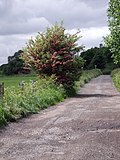

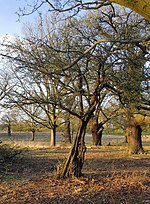



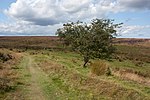


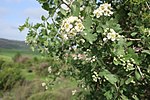




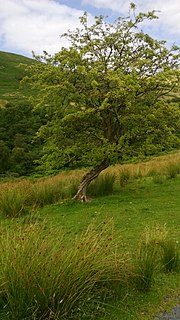

Recent Comments